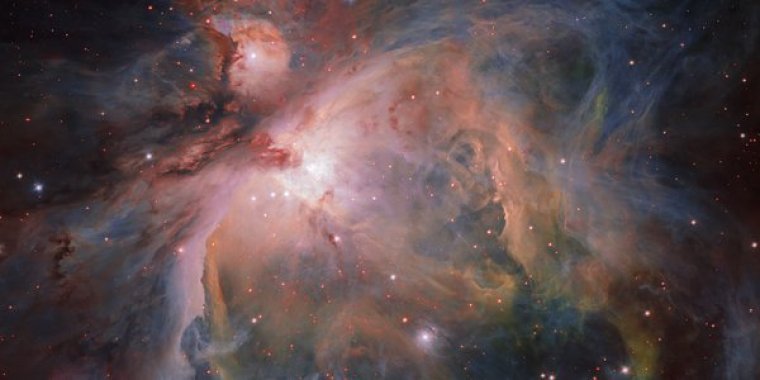| News / Space News |
A Tale of Three Stellar Cities
OmegaCAM — the wide-field optical camera on ESO’s VLT Survey Telescope (VST) — has captured the spectacular Orion Nebula and its associated cluster of young stars in great detail, producing a beautiful new image. This object is one of the closest stellar nurseries for both low and high-mass stars, at a distance of about 1350 light-years.

The Orion Nebula and cluster from the VLT Survey Telescope. ![]()
But this is more than just a pretty picture. A team led by ESO astronomer Giacomo Beccari has used these data of unparallelled quality to precisely measure the brightness and colours of all the stars in the Orion Nebula Cluster.
These measurements allowed the astronomers to determine the mass and ages of the stars. To their surprise, the data revealed three different sequences of potentially different ages.
This is an important result. What we are witnessing is that the stars of a cluster at the beginning of their lives didn’t form altogether simultaneously. This may mean that our understanding of how stars form in clusters needs to be modified.
The astronomers looked carefully at the possibility that instead of indicating different ages, the different brightnesses and colours of some of the stars were due to hidden companion stars, which would make the stars appear brighter and redder than they really were.
But this idea would imply quite unusual properties of the pairs, which have never before been observed. Other measurements of the stars, such as their rotation speeds and spectra, also indicated that they must have different ages.
They cannot yet formally disprove the possibility that these stars are binaries, it seems much more natural to accept that there are three generations of stars that formed in succession, within less than three million years.
The new results strongly suggest that star formation in the Orion Nebula Cluster is proceeding in bursts, and more quickly than had been previously thought. (ESO)
YOU MAY ALSO LIKE




